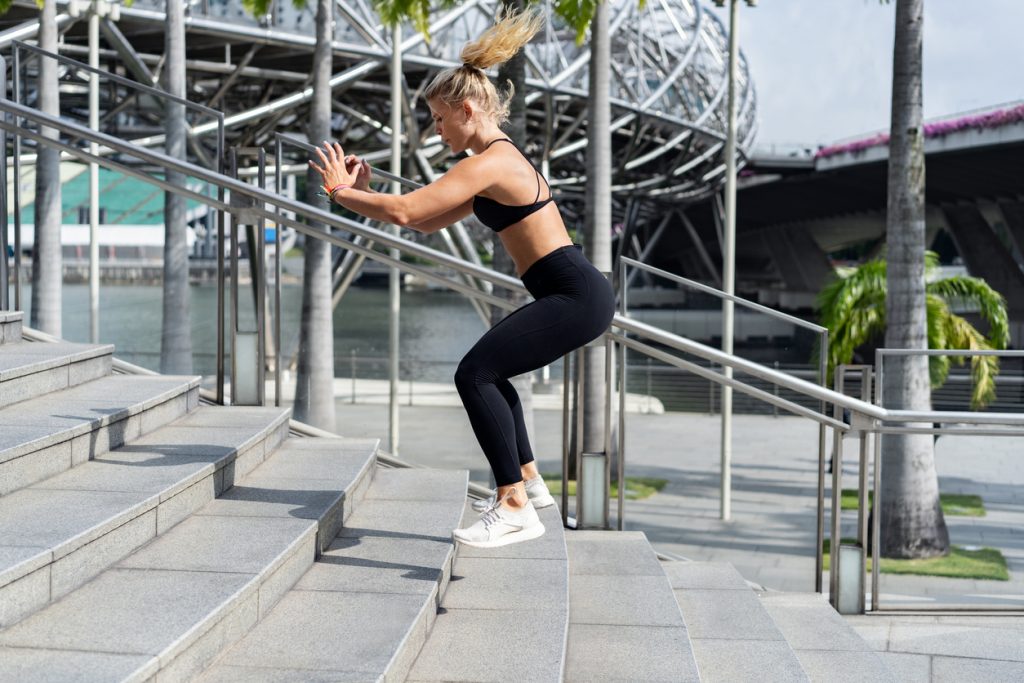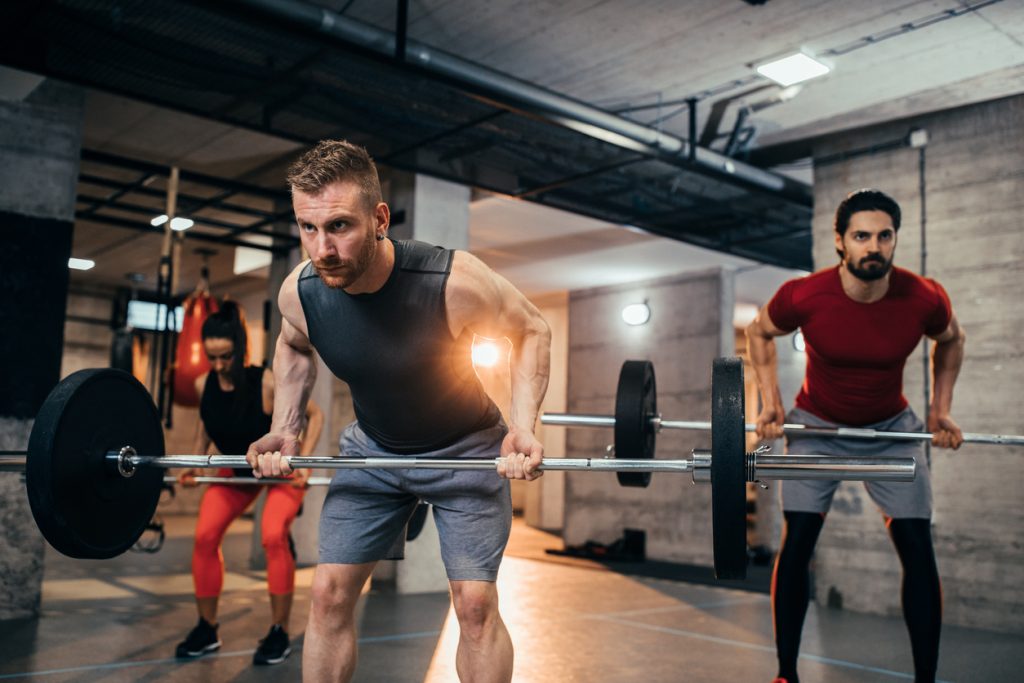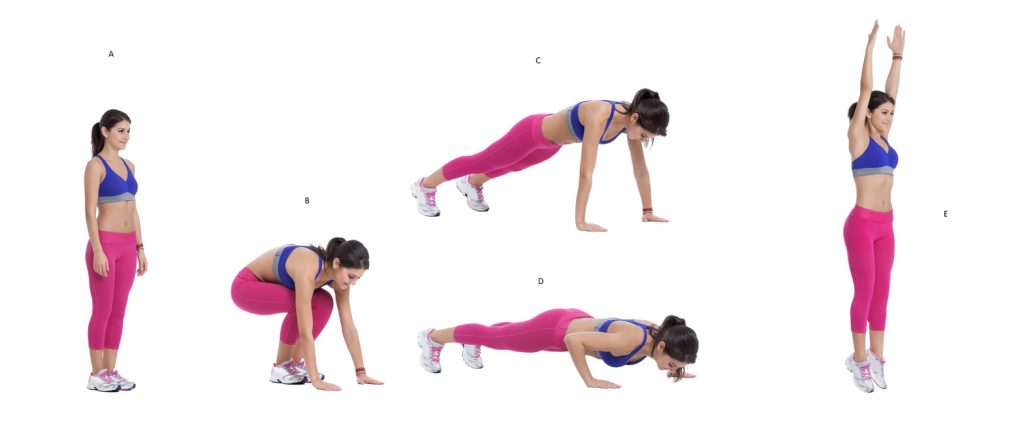Plyometrics is an explosive strength training technique.It is based on the express stretching of a muscle after its optimal contraction.It is a perfect method for building muscle tone and explosiveness in a quick movement.
Plyometrics is based on the elastic strength of the muscles as well as the myotatic reflex.Even though it is not widely practised, it is very suitable for body-building enthusiasts, especially as a physical preparation for athletes.
Plyometry, what is it?
Plyometrics is a training technique that was developed in the 1980s in the United States.These are jumping exercises that help sportsmen to strengthen their physical capacity.
Nowadays, some training methods, such as crossfit, are based on plyometrics.But it also plays an important role in the physical preparation of athletes.Indeed, plyometrics is starting to be known and integrated into the preparation techniques of several sports disciplines.The reason? Most sports require speed, explosiveness and strength.
In order to meet the demands of the various sports, plyometrics is no longer limited to jumps.It also includes sprints and strength training exercises.
Plyometrics is based on two main elements:
- the myotatic reflex,
- the elasticity of the muscles.
The myotatic reflex
This is a brief muscle contraction resulting from itsown stretch.To ensure muscle dynamism, such a reflex occurs constantly in our body.When we walk, for example, the myotatic reflex occurs automatically with each step.It successively contracts the leg muscles, but also the other muscles.This enables us to stand upright and stay upright.
To test the myotatic reflex, the doctor taps the knee with a hammer.Normally, this blow should result in an involuntary kick.In fact, this test shows that the nerves and tendons are not affected by a shock.
Muscle elasticity
This is one of the main properties of muscles.It is defined as the ability of muscles to stretch and then return to their original size.It is an antagonistic movement to muscle contraction.The latter involves shortening and shrinking of the muscle.Nevertheless, the two are inseparable.In concrete terms, there is always an antagonist muscle that counteracts the movement of the agonist muscle.
The most obvious example is the movement of the muscles when you do push-ups.During the push-up, the triceps contract.In response to this action, the biceps stretch.
The greater the degree of elasticity of your muscle, the more flexible you become and the better your sports performance.Indeed, when a muscle stretches more, this leads to an equivalent contraction and a higher development of muscle strength.
As an example, during the bench press exercise, high elasticity allows you to lower the bar lower.You will therefore have to strengthen your pectoral muscles more to raise the bar.You will improve with the number of repetitions.
Plyometrics: how it works
Plyometrics involves briefly stretching a muscle and then contracting it to its optimum.This rapid stretching will automatically cause the myotatic reflex to contract.This is to avoid a possible muscle tear.In other words, you take advantage of the reflex to increase muscle contraction.
The concept is simple: the more powerful the contraction, the more it optimises the strength of the muscle and helps to capitalise more elastic energy.This energy gives you the ability to return to your starting position with considerable explosiveness.
During the jump squat for example, your hamstring muscles extend during the jumping stage, which will cause the myotatic reflex.During the landing on the ground, the legs will bend as much as possible because of the strong contraction of the hamstrings.In compensation, your quadriceps will extend to the maximum.Your quadriceps will therefore store elastic energy making it possible to perform an energetic and explosive jump.
Why do plyometrics?
Plyometrics is a perfect method to develop strength, speed and explosiveness.As plyometrics can be integrated into different kinds of physical training, it can be combined with all sports.
Especially during physical training, if you opt for more suitable exercises, you can also improve your coordination.Another example: if you combine basketball with a plyometric jumping movement, basketball players can develop their shooting and improve their vertical relaxation.
The plyometric technique is not widely used in strength training.However, it is useful for developing strength, improving coordination and increasing performance.As plyometrics is based on short, explosive repetitions, the power output will not be the same as in normal, slow weight training repetitions.
Thus, the stored elastic energy associated with the myotatic reflex allows more muscle fibres to be worked and more force to be created.
If you are a beginner, your body will certainly generate more testosterone and growth hormones, thus promoting the gain of muscle mass.However, you have to be careful, because the muscle damage is also significant, not to mention the calories that will still be absorbed even after several hours of training.
In contrast to the classic bodybuilding exercises that help you to strengthen your muscle mass, plyometrics offers you an opportunity to develop a power that is useful for the sports activity that you practice.
In strength training, you always remain static.You perform movements in a lying, sitting or standing position, but you remain stable.These positions are not necessarily beneficial for other sports.Secondly, most of the time, strength training movements also target a muscle and not a whole.Finally, traditional strength training is not done explosively, but slowly.
Plyometrics, on the other hand, forces you to work several muscles at the same time to ensure a short movement.It also helps you to optimise the nerve connections and automatisms between the different muscles involved.
It works in a similar way to technical training, where repetitions of the same movement are required until it becomes a reflex or habit.In addition, you are building power and explosiveness instead of raw strength.Hence the need to select your workouts carefully in order to improve your performance and get better results.
For sports where it is necessary to maintain a large muscle mass, it is advisable to combine plyometric training with classic strength training.
Let's take rugby players as an example.They often face Herculean players.It is therefore useful to strengthen the muscle mass to face these physical duels.But plyometrics should not be overlooked, as it helps to increase explosiveness when running at speed and jumping during touches and tackles.
Plyometrics also helps you to improve your ability to perceive your own body in space.This is called proprioception.The more you practice, the more your myotatic reflexes are stimulated, reducing the risk of injury during hard work.
Doing plyometric exercises in an unstable position (foot squat, half-ball squat, ball pump, etc.) also helps you improve your proprioception.This allows you to maintain better stability, thus preventing you from falling unnecessarily during an effort.This feeling is very useful when you are working with an object.
Note that short repetitions also make the heart work better.The heart provides oxygen to the muscles, which allows you to continue your efforts.In other words, plyometrics allows a clear improvement of cardiovascular and pulmonary capacities.
By incorporating plyometrics into your training, you can vary your exercises.This takes you out of the habit and gives you new motivation.
Another important advantage is the efficiency of this method.Of course, this depends on the effort made and the physical aptitude of each person.But in general, plyometrics helps you to optimise your capacities during the first months or even weeks.
Taking your sport into account, you can for example do jumps, sprints or strength training at regular intervals.You will then see your progress.
Discover all plyometric exercises, by the way the burpees are one of them!




